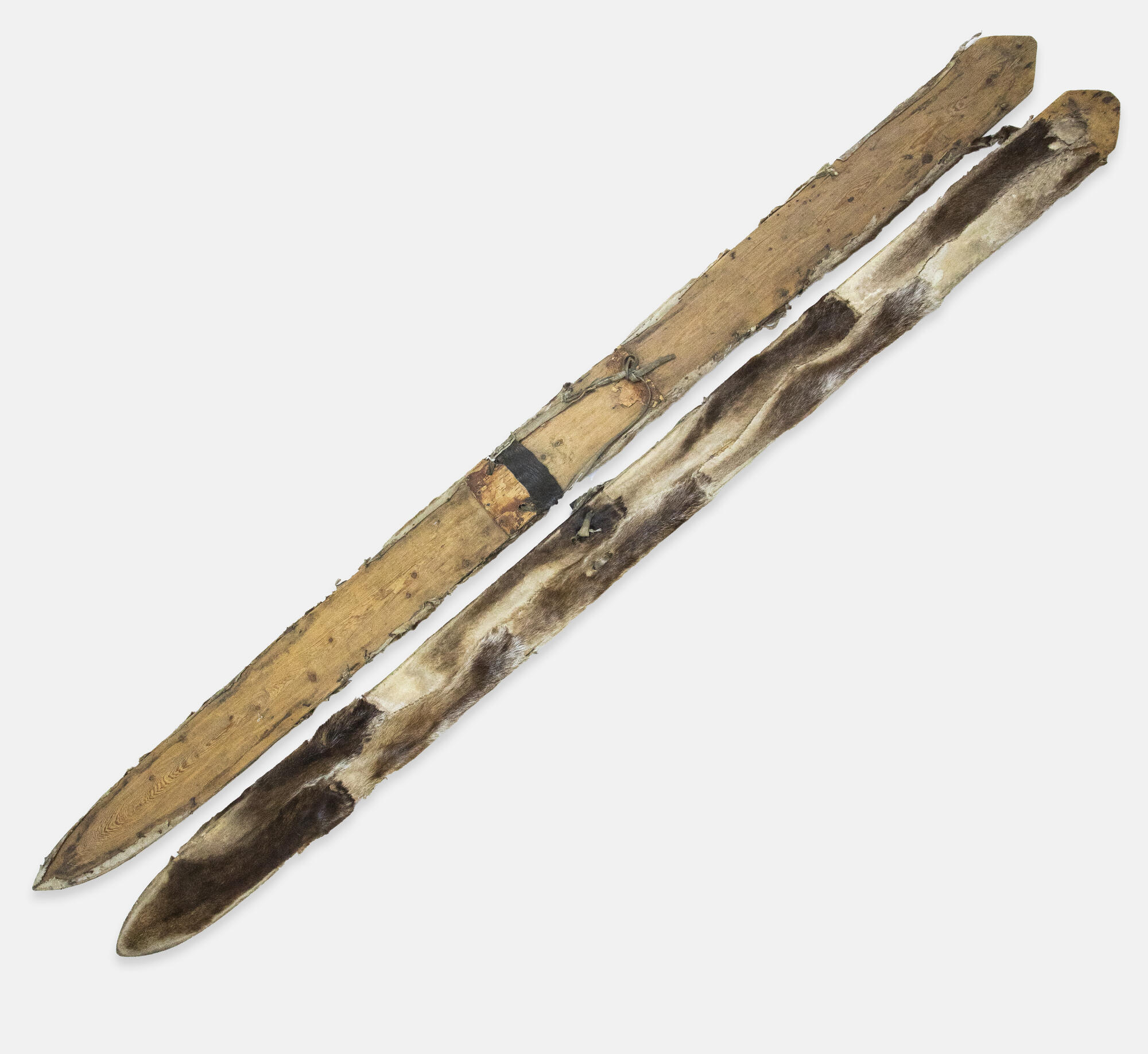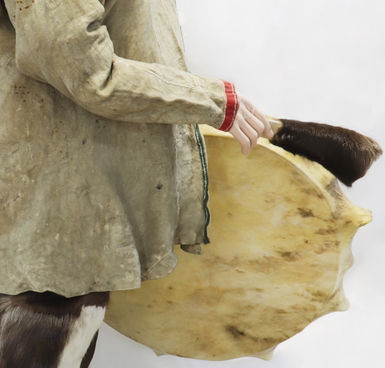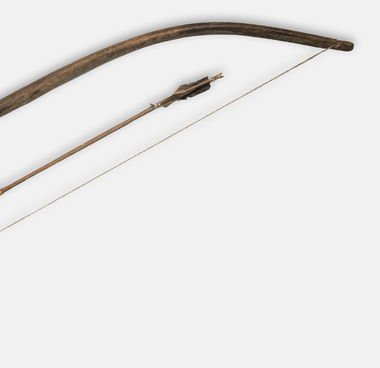“Pena lamba” skis are the main means of transportation for Nenets hunters in winter. These skis are traditionally made of wood and lined with kamus, referred to as “pena” by the Nenets. Kamus is the dense skin from the lower leg of a deer which is also used for winter boots.
Kamus is attached to the skis with fish scale glue. The pile is put in such a way as to facilitate sliding forward and prevent sliding backward. For greater durability, the edges of the kamus also go slightly to the top of the skis.
The skis are secured to the feet with a double strap that wraps around the toe and heel. Nenets hunters go skiing without poles, often using a wooden shovel instead that they carry to break up the snow when setting animal traps and grouse snares. The Nenets also hunt wild deer, Arctic foxes, and bears.
Traditionally, the Nenets have made all their hunting equipment, tools, and household items themselves. Nowadays, they often use factory-made skis and glue kamus strips to them. To dry the glued kamus, they design a special structure: they drive two thin poles into the ground, fix a board between them, and rope the skis to the board. Homemade Nenets skis are usually wider than factory-made ones.
Going around the traps, a Nenets hunter used to carry his skis on a hand sled pulled by a strap over the shoulder. He used skis wherever deep snow, ice, hills, and bushes prevented him from walking. Another type of Nenets ski, the “pai lamba”, is much shorter and wider — it is used in summer or on ice.
Outside of hunting, the Nenets made even the shortest trips in reindeer sleds. This was due to the impassible tundra terrain and the cultural mentality, according to which walking was considered improper, and only poor people who did not have reindeer were supposed to walk.
Nenets hunters do not use other people’s skis,
since the skis should match the height and weight of the skier. The Nenets
believe that skis, which help humans in the harsh northern climate, have
magical properties.






